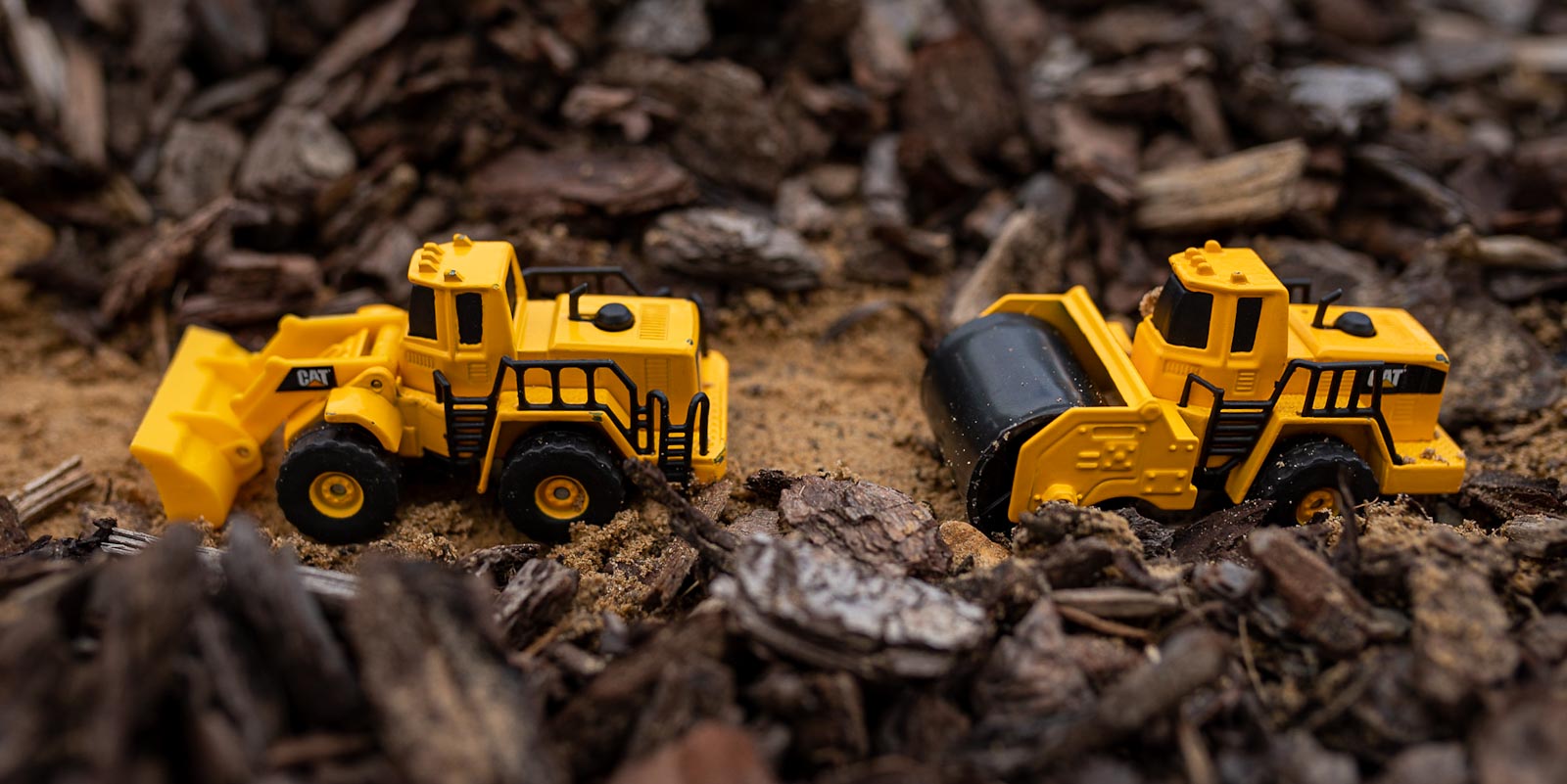
Construction and building sites are a popular interest in the early childhood years, but some children are specifically attracted to construction vehicles and trucks.
Educators can extend this interest by exploring other forms of transport. Children who are interested in mechanics may like engineering.
Construction vehicle names
Children may surprise you with their in-depth knowledge of construction vehicles. It might be the early childhood educators who need to learn their names!
Backhoe, bulldozer, car carrier, cement mixer, crane, dump truck, excavator, fire truck, flatbed truck, forklift, front loader, grader, loader, refrigerated truck, semi-trailer, steam roller, tanker, tractor, and ute.
EYLF learning outcomes
The Early Years Learning Framework has the learning outcome of children being connected with their world (2). As children observe trucks and construction vehicles in their daily lives, they help children develop a sense of belonging to communities (2.1).
Trucks connect children to powerful machines and technologies, which may leave them in awe of their capabilities (4.4).
Dramatic play with toy trucks and diggers encourages curiosity, imagination, commitment, enthusiasm, persistence, confidence (4.1), problem solving, and experimenting (4.2).
Learning experiences
Play a matching game
Make flash cards by printing pictures of different construction vehicles you find on the internet. Place these on a table with corresponding toys. Ask children to match the cards to the correct toy vehicle.
Use this as an opportunity to sit with children. Talk to them about their observations and model descriptive language (e.g. "this big yellow truck can carry heavy loads").
Play with a small world
Place sand, dirt, gravel, bark, and other loose materials in a large tray. Add building materials such as blocks, wooden planks, and plastic pipes. Finally, add toy trucks and diggers so children can play with a small-world construction site.
Wash your diggers
Trucks and diggers can get grubby! Set up two stations for children to play in with their construction vehicles.
- The first is a mud patch made from dirt and water, for the vehicles to drive through.
- The second is a wash station to clean them up. Provide clean water, soap, washcloths, spray bottles and dry towels.
Deliver parcels
Set up a system where children use toy trucks to deliver letters or parcels to other children in their classroom. A few children could write letters at a table and give them to a truck driver who delivers them to other children in the book corner.
Investigate mechanics
Heavy machinery is built with multiple moving parts. Educators may not know much about machinery themselves. They can either help children research their questions, or ask “what do you think this part does?”
Children interested in mechanics may enjoy:
- discussing the purpose of seatbelts and airbags
- role playing with tools and understanding the importance of regular vehicle maintenance
- experimenting with simple machines like pulleys, levers and gears.
Consider inviting a mechanic to talk to your children. Alternatively, a family member may use a “work truck” they can show.
Go shopping
Teach children about information technology by pretending to be shopping for heavy machinery on the internet. Explore the websites of companies who manufacture or sell these big vehicles. Which truck would you buy? How much do they cost?
Construction Sales is an Australian website with an interesting range, photos and price tags.
Learning environments
Add trucks to the sandpit
Turn your sandpit or mud patch into a construction zone by adding vehicles and observing how the children use them. Suggest they:
- dig holes, roads and tunnels
- work in a team with other trucks
- collect items in the truck beds like stones and feathers.
Provide roads and ramps
Inspire your truck-loving children by setting up:
- a ramp for their trucks to go down
- a bridge for their trucks to cross
- a construction site with building materials for the trucks to transport
- roads on the floor made with masking tape or chalk.
Interactions
While children play with vehicles, early childhood educators can model language use:
- Count the number of trucks a child is playing with.
- Make noises: “Vroom eeeeooor brmm brmm toot toot hooonk!"
- Describe the different textures of the surfaces that the trucks drive over.
- Ask children where they want to drive their vehicles.
- Classify construction vehicles by talking about their sizes, colours and functions.
Discussions
- Can you think of things that construction vehicles help build?
- How do you think a bulldozer moves dirt and rocks around?
- What sounds do construction vehicles make?
- What colours do they come in?
- If you could design your own construction vehicle, what special features would it have?
Resources
Picture books
- All of the Factors of Why I Love Tractors by Davina Bell and Jenny Løvlie
- Little Yellow Digger by Betty Gilderdale and Alan Gilderdale
Songs
Sing along to wheels on the truck performed live on Play School.
